반응형
IN DEPTH| 7 January 2015
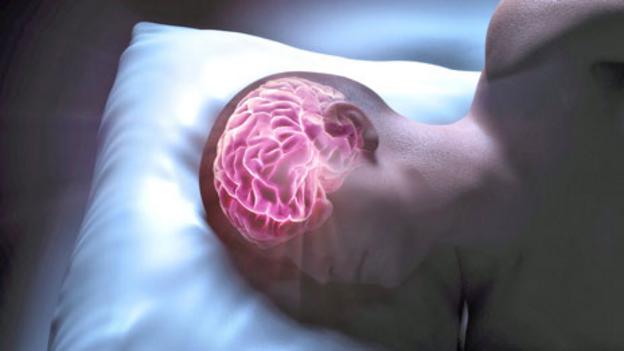
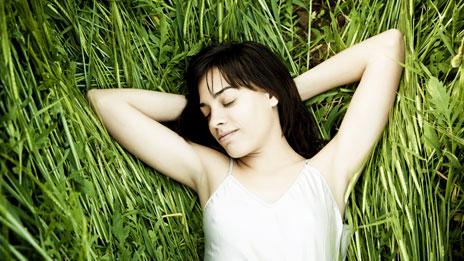
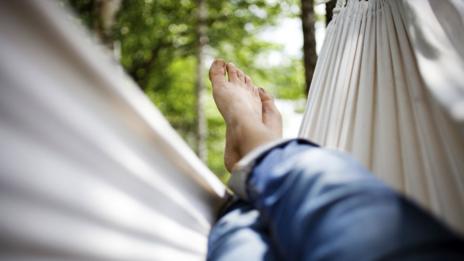
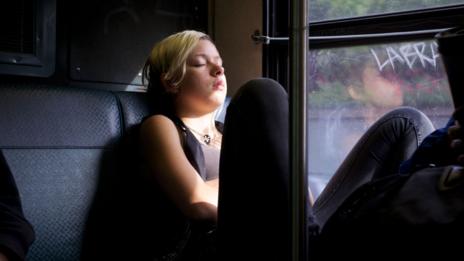
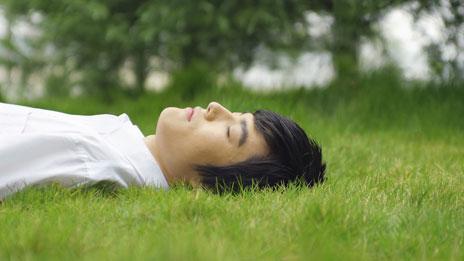
Sleep: How to nap like a pro

(SPL)
We’ve all heard of the merits of power naps, says Tiffanie Wen, but are there good and bad ways to sleep during the day?
Growing up, sleep was considered paramount in my family home. My siblings and I didn’t have many house rules – bedtimes were flexible, we had free reign over microwaved TV dinners (this was the 1980s), and video games. But one thing was always crystal clear: we couldn’t disturb an adult, or another kid, who was taking a nap.
As I got older, I was in for a rude awakening. Apparently, society looks down upon napping in the adult working world. But evidence is growing that napping can produce cognitive benefits from increased alertness to improved motor skills, perception and memory consolidation. So how do you get the best from a brief bit of shuteye?
In a study published last year, researchers found that both nocturnal and daytime sleeping improved memory consolidation for unrelated word pairs – like ‘pepper’ and ‘elbow’ – suggesting it can help if you’re trying to learn tricky-to-remember concepts. Another study, conducted at the Beijing University of Technology, examined the effect of napping on athletes after training. It found that naps could improve brain function and visual systems, and promote physical and mental recovery – a result that is in line with earlier research demonstrating that napping can facilitate motor memory consolidation

(Thinkstock)
In a study published in 2008, the University of California’s Sara Mednick– author of Take a Nap! Change Your Life – and her colleagues compared the benefits of 200mg of caffeine (about the amount in a cup of coffee) with a 60 to 90 minute daytime nap on various memory tasks. They found that a nap generally improved memory performance, while caffeine either didn’t affect – or worsened – performance. The researchers suggest that caffeine blocks consolidation of new material into long-term memory by increasing levels of a neurotransmitter called acetylcholine in the hippocampus (the same neurotransmitter that naturally decreases during slow wave sleep).
The promised benefits of sleep have even persuaded a few firms to allow their employees to nap at work. Earlier this year, software companyHubSpot designed a napping room in its Massachusetts office that features a hammock and dim lighting. Employees are free to book the space without limitations.

(Thinkstock)
According to HubSpot’s Alison Elworthy, the policy is a huge success, especially helpful for new parents who are making up for disrupted sleep at night, or employees recovering from jetlag. “People are really excited to use it and haven’t abused the policy at all,” she says.
Other firms have had less success. Earlier this year, BBC Capital reported that napping policies led to slacking off and procrastination at some companies, and a 30% drop in productivity at one Toronto-based tech start-up.
Even so, Mednick claims that about 40% of the population are habitual nappers – meaning they feel the need for, and benefit from, a regular afternoon snooze. So if you’re a natural napper (and I am), what is the most effective way to nap?
The best way to nap
According to researchers, the most natural time to take a nap, based on our circadian rhythms, is in the afternoon sometime between 2 and 4pm. Mednick even designed a napping wheel that pinpoints the ideal time to snooze, when a nap would contain a good balanced of slow wave and REM sleep. This balance typically occurs six to eight hours after waking.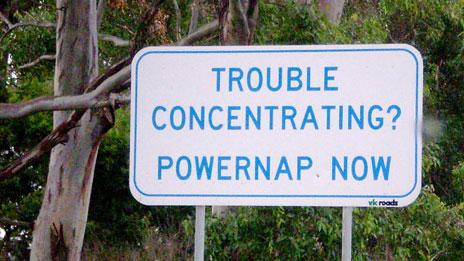

(Tony Bowden/Flickr/CC BY-SA 2.0)
But the best way to nap also depends on what kind of effects you’re looking for. In a 2009 study, Mednick and her colleagues compared the effects of REM sleep, non-REM sleep, and quiet rest (while awake) on creative problem-solving. On the morning of the test, students were given a task in which they had to come up with a word that is associated with three apparently unrelated words – for instance ‘falling’, ‘actor’ and ‘dust’ can all be associated with the word ‘star’. Early in the afternoon, the students either took an REM nap, a non-REM nap or spent time resting while awake. When they returned in the evening to repeat versions of the morning’s test, the students who had taken the REM naps performed the best. In other words, it seems that REM can enhance creative problem solving.
“So if you’re looking for a restorative nap, you should sleep later in the day when you have an increased amount of slow wave sleep,” says Mednick, “And if you’re looking for a nap that might aid your creativity, you should sleep earlier in the day when you experience more REM.”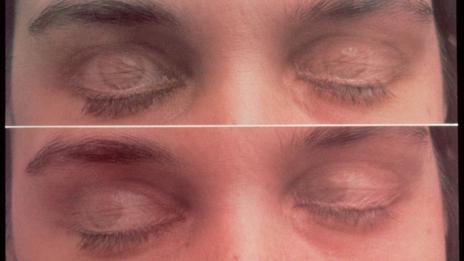

REM sleep can foster creative problem-solving (SPL)
But getting REM sleep also means having to sleep for longer – about 60-90 minutes – because it is the last stage of the sleep cycle. Short naps can have benefits too, though.
A study in Australia found that a 10-minute afternoon nap was enough to help participants recuperate from a night of restricted sleep. Participants felt less sleepy, more vigorous and showed improved cognitive performance for as long as 155 minutes following the nap. Though 20 and 30-minute naps also showed benefits, the cognitive improvements took longer to set in, presumably because participants needed to recover from the sleep inertia caused by the longer naps.

(Timothy Brown/Flickr/CC BY 2.0)
This ties in with research conducted by John Groeger, a professor of psychology at the University of Hull in the UK, which indicates thatnappers should avoid complicated, higher-level executive tasks right after waking. “When you wake you can do simple things pretty well,” he said, “but your brain needs an hour or two to come fully back online.”
Timing is everything
Clearly, then, getting the timing of a nap right is key – which is something that new smartphone apps and even intelligent sleep masks are trying to capitalise on. NeuroOn, a smart sleep mask that tracks brain waves and eye movements to wake you at the optimum time, raised four times its target in a Kickstarter campaign in January, and is due to be released next year. It won’t be the first smart sleep mask to reach the market. A similar device called Zeo briefly hit shelves in the US before the company shuttered last year.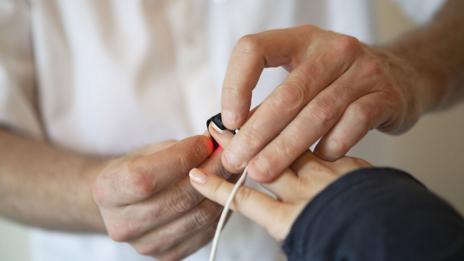

A sensor is applied to monitor sleep in the laboratory (SPL)
In a recent study, Nicola Cellini, a researcher at the University of Padova, and his colleagues examined how Zeo compared to the “polysomnography” systems found in sleep labs in its ability to monitor sleep phases. Maybe unsurprisingly, they found that the Zeo performed relatively poorly compared with the lab equipment – and certainly not to the standards required for sleep researchers.
Despite the results of the study, though, Cellini believes that it’s only a matter of time before a personal mask that can accurately monitor a person’s sleep comes to market. In fact, there is already some evidence showing that something as simple as two electrodes on the forehead canaccurately track sleep.

(Thinkstock)
All of this advice about enhancing your napping should come with caveats, however. For example, Elizabeth McDevitt at the Sleep and Cognition Lab at the University of California, Riverside is studying whether non-natural nappers who are trained to nap regularly experience cognitive improvements. Though the study is not yet published, she says that so far, it seems that non-natural nappers don’t experience any gains. This means that if you don’t feel the need to nap, forcing yourself won’t help.
And Cellini and others are quick to reject the notion of polyphasic sleep – a strategy in which people sleep for short periods throughout the day in order to spend less time sleeping overall. “No matter how you design it, napping is never going to be as good as getting a full night of sleep,” he says.
It seems that to nap properly, you have to ask a professional how it’s done.
전문가처럼 낮잠자는 법
파워낮잠의 장점을 들은 바 있으실 텐데요, 그런데 하루 중에 잠을 자는 좋은 방법과 나쁜 방법이 있을까요?라고 티파니 웬은 물었다.
자라면서 잠을 자는 것은 가장 중요한 듯 하다. 우리집에서 형자매들과 나에게는 잠에 대한 어떤 규칙도 없었다-언제든 잠을 잘 수 있었고, 전자렌지로 데워진 저녁을 먹는 동안 TV를 자유롭게 볼 수 있었다.(이것은 1980년대이다.) 그리고 비디오 게임도 할 수 있었다. 하지만 명확한 것은 어른을 방해하거나, 낮잠을 자는 다른 아이를 방해할 수 없었다는 사실이다.
나이가 들면서 문득 깨닫게 되었다. 성인이 일을 하는 사회에서 낮잠을 자는 것을 경시되어지고는 한다. 하지만, 낮잠이 운동기능, 인지 그리고 기억강화를 향상시키기 위한 각성도를 높이는 인지적인 혜택을 준다는 증거가 속속 나오고 있다. 그러면 짧은 잠으로 최대의 효과를 얻을 수 있는 방법에는 무엇이 있을까?
지난해 발행된 연구에 따르면 연구자들은 밤잠과 낮잠 모두 관련되지 않은 단어 짝짓기-'후추'와 '팔꿈치'-를 위한 기억강화를 향상시킨다는 사실을 발견했다. 이는 기억하기 어려운 개념을 기억하려고 할 때에 도움이 될 것이라는 것을 나타낸다. 베이징 기술대학에서 이루어진 다른 연구는 트레이닝 이후 운동선수의 낮잠 효과를 시험했다. 이는 낮잠이 뇌 기능과 시각 능력을 향상시키고 신체적, 정신적 회복을 촉진한다는 사실을 밝혔다. 이는 낮잠이 운동 기억 향상을 용이하게 한다는것을 시험한 이전의 연구와 일맥상통한다.
낮잠을 자라!인생을 바꿔라의 저자인 캘리포니아 대학교의 사라매드닉과 동료들이 2008년 발간한 연구에서는 다양한 기억과제에서 200mg의 카페인 (한 잔의 커피량)이 가져오는 이점과 60에서 90분 낮잠의 이점을 비교했다. 그들은 카페인이 효과를 나타내지 못하거나 오히려 기억력을 저하시킨 반면에 낮잠이 기억능력을 전체적으로 향상시켰음을 밝혔다. 연구자들은 카페인이 해마에 있는 아세틸콜린이라고 하는 신경전달 물질의 수준을 높여 새로운 것이 장기 기억으로 강화되는 것을 막았다고 말했다.(서파수면-느린눈운동수면-중에 자연적으로 저하되는 동일한 신경전달물질)
이러한 수면의 효과로 인해 일부 회사가 그들의 직원에게 직장에서 낮잠을 허용하게 되었다.올해 초, 컴퍼니허브스팟이라는 소프트웨어사는 매사추세츠 지사에 해먹과 낮은 조도의 조명을 갖춘 낮잠장소를 디자인했다.
허브스팟의 앨리슨 엘워시에 따르면 이 정책은 엄청난 성공을 이뤄냈고, 특히 밤에 잠을 자지 못하는 젊은 부모나 비행기를 타고 난후의 피로를 회복하고자 하는 직원에게 도움이 많이 되었다고 한다. "사람들은 이 정책에 대해 매우 들뜬 반응을 보여요. 그리고 절대 이를 남용하지 않습니다,"라고 그녀는 말했다.
다른 회사에서는 그리 성공적이지 못했다. 올해 초, BBC 캐피탈은 일부 회사에서는 낮잠 정책이 직원이 게을러지고 태만해지도록 하고, 토론토에 있는 창업회사에서는 30%의 생산성 감소가 있었다고 한다.
그럼에도, 메드닉은 인구의 40%가 자연적 낮잠인-잠이 필요하다고 느끼고, 규칙적인 오후낮잠에서 이익을 얻는 사람을 의미-이라고 말했다. 그러므로, 당신이 자연적 낮잠인(저도)이라면, 낮잠을 자는 가장 효과적인 방법은 무엇인가?
낮잠을 자는 최고의 방법
연구자들에 따르면 낮잠을 자기에 가장 생물학적리듬에 자연스런 시간은 오후 2시와 4시 사이인 것으로 드러났다. 메드닉은 심지어 낮잠의 가장 이상적인 시간을 정확히 알려주는 낮잠바퀴(napping whieel)를 디자인 했다. 이는 낮잠이 REM 잠의 서파수면과 급속안구운동(REM,렘)수면의 균형을 이루는 낮잠 상태이다. 이 균형은 일반적으로 일어난 후 여섯시간에서 여덟시간 이후에 일어난다.
하지만, 낮잠을 자는 가장 좋은 방법은 어떤 효과를 얻길 원하는가에도 달려있다. 2009년 연구에서 메드닉과 그녀의 동료는 창의적 문제해결시에 급속안구운동(REM,렘) 수면, 비급속안구운동(non-rem,비렘) 수면, 그리고 조용한 휴식 (깨어있는 상태에서)의 효과를 비교하였다. 테스트 당일 아침,학생들은 세개의 관련없어 보이는 단어들-예를 들면 '떨어지는falling''연기자actor'그리고 '먼지dust'와 같은 단어들은 '스타'라는 단어와 모두 연결될 수 있다-과 연관된 단어를 생각해내야 하는 과제를 부여받았다. 오후 일찍, 학생들은 렘 낮잠을 자거나, 비 렘 낮잠을 자거나 깨어있는 상태에서 휴식을 취했다. 그들이 저녁에 아침의 테스트의 버전을 다시 반복했을 때, 렘 낮잠을 잔 학생들이 가장 문제를 잘 풀었다. 다른 말로는, 렘수면이 창의적인 문제해결을 강화시키는 것 같다.
"그러므로 원기를 회복시키는 낮잠을 자고자 하면, 서파수면의 양이 늘어나는 하루중 늦은 시간에 자야 한다. 그리고 당신의 창의성을 발전시키려고 하면, 더 많은 렘수면 상태를 경험할 수 있는 하루중 이른 시간에 자야한다"라고 메드닉은 이야기했다.
하지만 렘수면이 잠의 주기에서 가장 마지막 단계이기에 렘수면을 취한다는 것은 60에서 90분정도의 긴 잠을 자는 것을 의미한다. 하지만 짧은 낮잠도 장점은 있다.
호주에서의 연구는 오후 10분의 낮잠이 참여자가 제한된 밤수면에서 회복하는데 도움이 되는데 충분하다고 밝혔다. 참여자들은 낮잠을 잔후 155분까지는 덜 졸립게 느꼈고, 더 활력있어졌고 인지능력도 향상되었다. 20분에서 30분의 낮잠도 장점은 있었지만, 인지향상이 일어나기 까지는 시간이 걸렸다. 예상하기로 이는 참여자가 긴 낮잠 후 비몽사몽의 상태에서 회복할 필요가 있었기 때문인 것으로 보인다.
이는 영국의 훌 대학의 심리학 교수인 존그로거가 수행한 낮잠인이 일어난 이후 복잡하고, 고수준의 임원급 과제를 피해야 한다고 하는 내용의 연구와 일맥상통한다. "일어났을 때 간단한 일은 꽤 잘 수행할 수 있다. 하지만 당신의 뇌는 완전한 활동을 하기까지는 한시간에서 두시간 정도가 소요된다."라고 그는 말한다.
타이밍이 가장 중요하다.
그러면, 적합한 시간에 낮잠을 자는 것이 핵심이라는 것은 명백하다. 이는 또한 스마트폰 어플 및 인텔리전트 수면마스크가 수익을 올리려고 하는 부분이다. 최적의 시간에 깨우기 위해 뇌파와 안구 운동을 추적하는 스마트 수면 마스크인 뉴로온은 1월 킥스타터 캠페인에서 네번이나 그 목표액을 높인바 있고, 이는 내년에 출시될 예정이다. 이는 시장에 진출할 첫번째 수면 마스크는 아니다. 제오라고 불리는 유사한 장비가 미국에 있었고, 회사는 1년여 전 문을 닫게 된 바 있다.
최근의 연구에서 파도바 대학의 연구원인 니콜라 셀리니와 그의 동료들은 제오를 수면 연구실에 있는 "수면 다원검사" 시스템과 비교해 수면 상태를 모니터링 하는 능력을 측정했다. 당연하게도 제오가 실험실 장비와 비교해 성능이 떨어진 다는 것을 발견했고, 수면 연구자에게 필요한 기준에 부합하지 못한다는 것을 알았다.
연구의 결과에도 불구하고, 셀리니는 사람들의 수면을 모니터링 할 개인 마스크가 시장에 나오는 것은 시간문제라고 믿었다. 실제로 이미 두개의 전극을 이마에 연결해 수면을 정확히 추적할 수 있는 제품이 있다는 것이 그 증거이다.
하지만 낮잠에 관한 이런 모든 조언은 조심스럽게 받아들여져야 한다. 예를 들어, 캘리포니아 대학교 수면과 인지 연구소의 엘리자베스 맥데빗은 낮잠을 정기적으로 자게끔 훈련된 비 낮잠인은 인지향상을 경험한다. 이 연구는 아직 출간되지 않았지만, 그녀는 비 낮잠인은 어떤 것도 얻지 못하는 것으로 보인다고 말한다.이는 낮잠이 필요하지 않다고 느끼는데 억지로 자는 것은 도움이 되지 않는다는 것을 의미한다.
그리고 셀리니와 다른이들은 다단계 수면 -전체 수면 시간을 줄이기 위해 사람들은 하루 중에 짦은 시간동안 자는 전략-의 개념을 거부한다. "어떻게 디자인을 하건 관계없이, 낮잠은 완전한 밤잠만큼 좋을 수 없습니다."라고 그는 말한다.
낮잠을 제대로 자기 위해서는 어떻게 낮잠을 잘지 전문가와 상담해야 할 듯 하다.
반응형
'예전포스팅' 카테고리의 다른 글
| 수면장애를 겪고 계세요? (0) | 2015.04.09 |
|---|---|
| 수면 관련 좌담회 (0) | 2015.04.09 |
| The Newsroom/We Just Decided To (75 min) - Season 1, Episode 1 (0) | 2015.04.08 |
| 건설용어 (KPI 콘텐츠) (0) | 2015.04.06 |
| [강남역 음식] 강남 나들이-멕시칸 음식점, 훌리오 JULIO (0) | 2015.04.05 |

